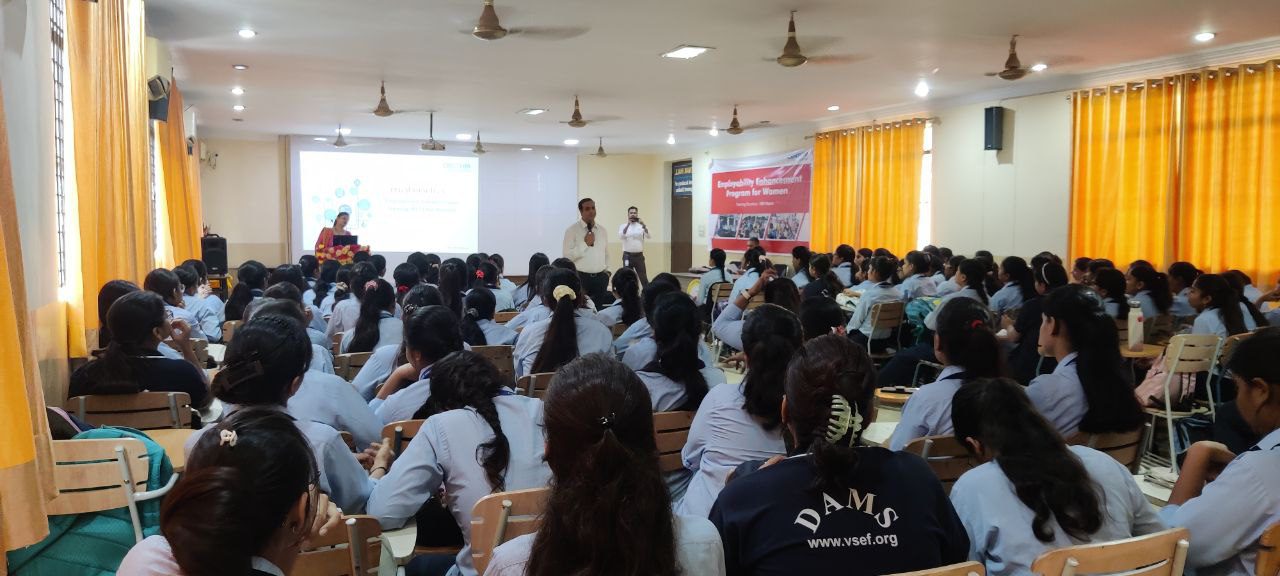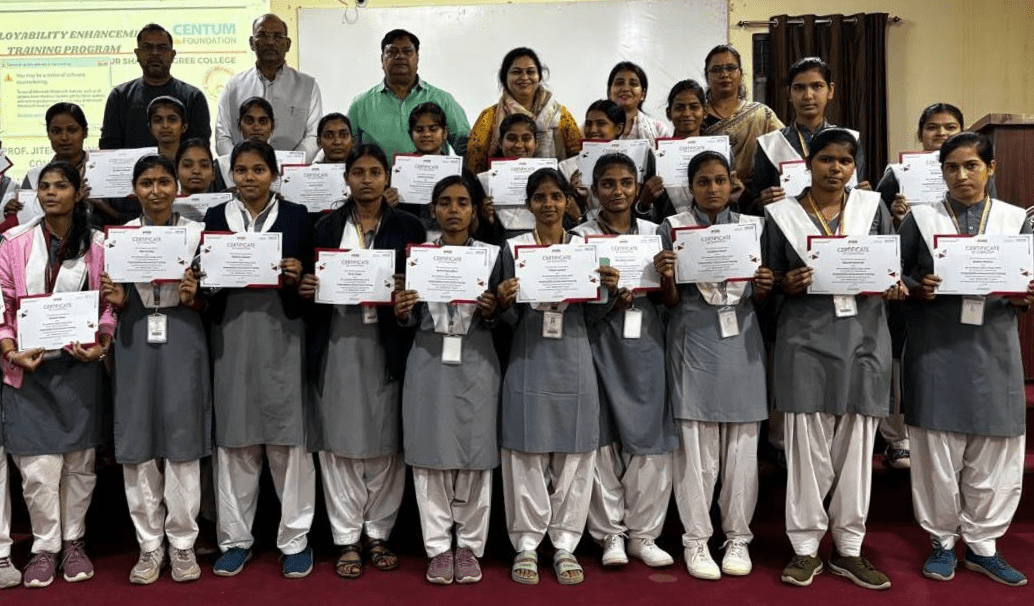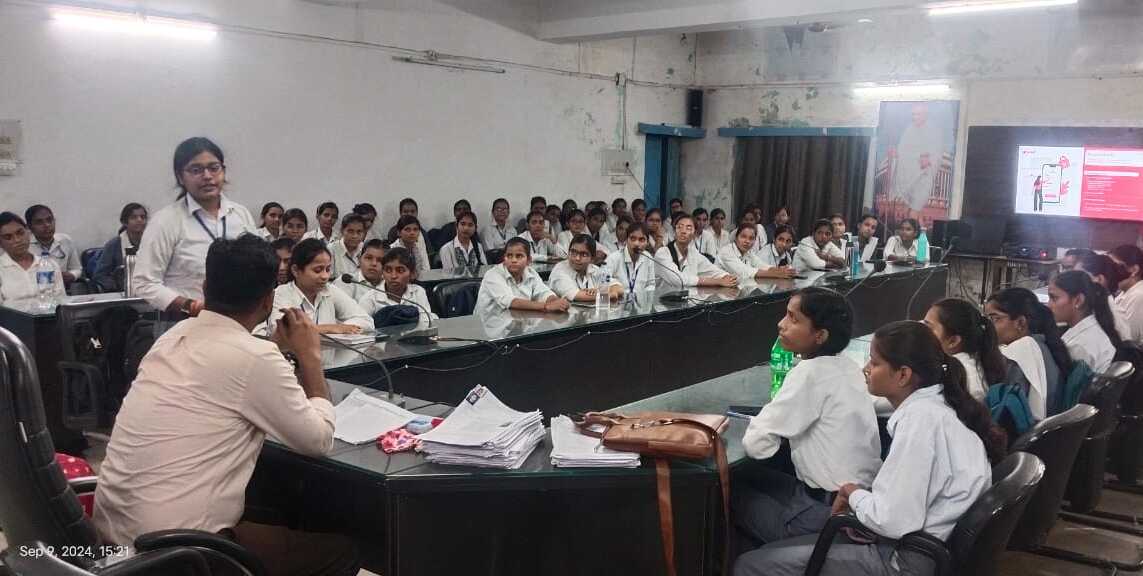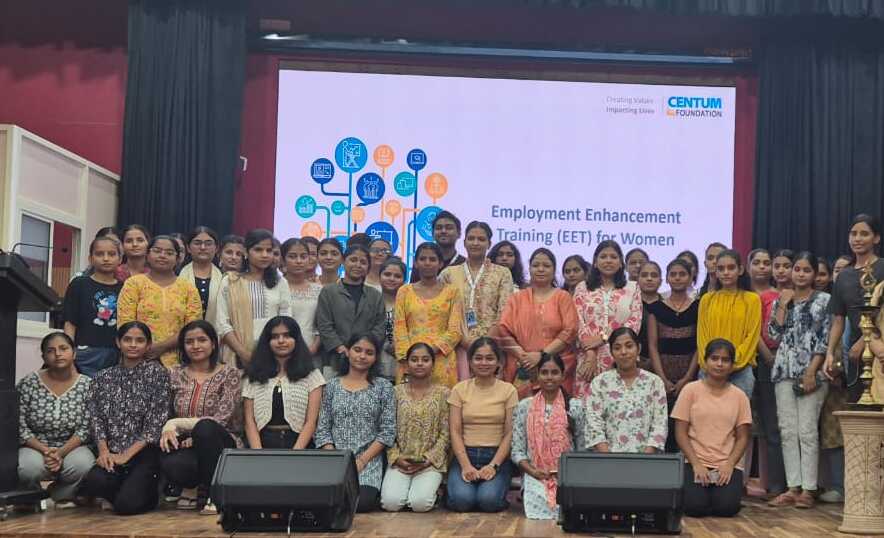There has been a consistent decline in women’s labour force participation driven by a set of diverse factors ranging from socio-cultural norms & care giving responsibilities, employer biases, geographic and migration hurdles & effective linkages to suitable jobs. Limited access to education, inadequate training, and systemic challenges hinder their participation in the workforce.
Recent statistics indicate some progress, with India’s female labor force participation rate for women aged 15 and above increasing to 32.8% in 2021-22, compared to 23.3% in 2017-18. This rise, as reported by the Directorate General of Employment, reflects the impact of educational reforms, vocational programs, and government initiatives.
While this improvement is encouraging, the journey toward gender parity remains far from complete. The World Economic Forum’s Global Gender Gap Report 2023 ranked India 129th out of 146 countries in economic participation and opportunity, underscoring persistent challenges. Societal norms, gender-based restrictions, and limited access to education continue to hinder women’s full participation in the workforce.
Table of Contents
The Current State of Women in India’s Workforce
Despite recent progress, India’s female labour force participation rate, as reported by the World Bank, was 23.8% in 2021, which signifies opportunities to leveraging the untapped demographic to enter the growing workforce. Societal expectations, unequal access to education, and the lack of skill development tailored for women remain key barriers. This is especially true for women in rural areas, who often find themselves relegated to informal, low-paying jobs due to inadequate training, and face restrictions to migrate for work due to care giving responsibilities & socio-economic barriers. Women as a result, lack financial autonomy and agency, and face many barriers to entry into the workforce, further underscoring the need for focused interventions to provide women with skills that align with market demands & hyper-local opportunities
If India is going to continue on the path of rapid growth, it is not clear that services alone (IT) will be the engine. We need holistic growth…tech, manufacturing, services, etc….and women participation will be needed to fuel the growth as well as to ensure social equity in India. There is huge scale and potential for growth in women’s participation at entry level jobs, which will contribute to the overall economy and workforce, and we must include this demographic of the population as we grow.
The Economic Potential of Upskilling Women
Upskilling women is more than just a social initiative—it is an economic imperative. According to a McKinsey Global Institute report, advancing gender equality and increasing women’s participation in the workforce could add $770 billion to India’s GDP by 2025. The Fourth Industrial Revolution, with its focus on technology and automation, has created both opportunities and challenges for the workforce.
There is an increasing demand for skills in areas like data analytics, software development, and digital marketing. However, women remain underrepresented in these fields. So far women have explored jobs limited to certain sectors (beauty, healthcare, hospitality, apparel, education). We need to also counsel the women to raise their awareness on career pathways & opportunities for women, and provide access to jobs beyond the ones they have traditionally been exposed to. On the flip side, corporates and employers also need to adapt by enhancing infrastructure & safety policies to be more gender inclusive in their hiring practices. The idea is to have dignified work for women that can help build agency along with an increase in income. Head, Heart & Hand (Leadership, Social and Structural)
By fostering financial independence, skilling initiatives also contribute to better social outcomes, as women tend to reinvest in their families’ health and education. Bridging the gap between education and employment through skilling is critical to make these women ‘job ready’. Effective counselling to families, gender intentionality in workplace practices and ease of access to jobs could significantly contribute to women’s economic empowerment journeys.
Critical Areas for Upskilling Women
Digital Literacy and Technology Skills: In today’s digital economy, technological proficiency is indispensable for women seeking meaningful employment. Programs that focus on enhancing digital literacy are vital for equipping women to succeed in roles related to IT, data management, e-commerce, and more. Beyond basic digital skills, advanced tech training in areas such as coding, cloud computing, cybersecurity, and digital marketing empowers women to thrive in high-demand, emerging industries. By narrowing the gender digital divide, these programs create opportunities for women to access better-paying jobs and gain financial independence. Moreover, fostering digital fluency enables women to participate in remote work opportunities, addressing regional employment disparities and allowing women in rural areas to contribute to the global economy.
Entrepreneurship and Business Management: Women face numerous challenges in accessing financial services, markets, and resources necessary for entrepreneurship. Training programs that focus on financial literacy, business acumen, and management skills empower women to take ownership of their economic futures. Such programs also equip them to scale small enterprises, navigate complex regulatory environments, and access investment opportunities. By fostering entrepreneurship, particularly in underserved communities, these initiatives not only generate jobs but also create resilient, locally-led economies. Tailored support—such as access to mentorship, networking platforms, and venture capital—can help women entrepreneurs overcome structural barriers, allowing them to grow sustainable businesses. Additionally, digital tools can streamline business management, enabling women to tap into e-commerce platforms and digital payment systems, expanding their market reach.
Soft Skills and Leadership Training: In many industries, career success requires a balance between technical proficiency and soft skills such as leadership, communication, teamwork, and negotiation. 21st century skill programs that help women develop these essential skills are critical in preparing them to succeed in acquiring jobs and eventually in leadership roles. Such training empowers women to confidently advocate for themselves, how to present themselves, and negotiate fair pay, and take on managerial positions, thereby addressing gender disparity in leadership. Additionally, soft skills development enables women to build effective teams, manage projects, and enhance their professional influence, making them valuable assets to organizations. The development of emotional intelligence and interpersonal skills also positions women to better navigate the challenges of traditionally male-dominated sectors, ensuring that they can break through existing barriers to leadership and contribute to organizational decision-making.

Sector-Specific Training: Tailored training in sectors with high demand, such as healthcare, hospitality, and sustainable agriculture, can substantially increase women’s employability. For example, in the healthcare sector, women can be trained for roles as nurses, lab technicians, or healthcare administrators, meeting the growing demand for qualified professionals in both urban and rural areas. In hospitality, women can be equipped with the skills to excel in roles ranging from customer service to hotel management. Furthermore, sector-specific training in sustainable agriculture and green technologies provides women with the knowledge to engage in eco-friendly practices, such as organic farming, renewable energy projects, and waste management. These initiatives help build sustainable livelihoods while addressing broader environmental challenges. This holistic approach not only increases women’s access to formal, structured employment but also contributes to broader economic and social development, especially in rural communities.
Challenges in Upskilling Women
Despite numerous initiatives, several systemic and socio-economic barriers still impede the effective upskilling of women, particularly in rural and underserved areas:
- Societal Norms and Gender Bias: Deeply rooted cultural and societal norms often restrict women’s mobility, education, and professional aspirations. Many women, especially in conservative communities, are expected to conform to traditional roles such as caregiving, limiting their ability to pursue training or employment. These gender biases extend beyond the household and influence community perceptions, discouraging women from engaging in skill-building activities or entering formal employment.
- Inaccessibility of Training Facilities: Urban concentration of training programs exacerbates the challenge of accessibility for women in rural and remote areas. Many skill development centers are located in cities, requiring long commutes that are often unfeasible for women due to family responsibilities, safety concerns, or lack of transportation. This geographic divide makes it difficult for women in rural regions to participate in meaningful upskilling initiatives, further entrenching economic inequalities between urban and rural populations.
- Digital Divide: Despite the growing focus on digital literacy and technology-driven skills, the digital divide remains a significant barrier. Many women, particularly in rural and underprivileged areas, lack access to reliable internet, smartphones, or computers. This divide not only limits their participation in online learning programs but also their ability to engage with emerging technologies critical to many modern job markets. Moreover, even where access exists, a lack of digital skills can prevent women from fully leveraging available resources.
- Financial Barriers: The cost of training programs can be prohibitively high for many women, especially those from economically disadvantaged backgrounds. Even when programs offer subsidies or financial aid, associated costs such as transportation, childcare, or lost wages can deter participation. This financial burden often falls hardest on women from low-income households who may prioritize family needs over personal development, further reducing their ability to invest in long-term career advancement.
- Limited Outreach and Awareness: A lack of targeted outreach and awareness campaigns means that many women are unaware of available upskilling programs. Information gaps exist not only in rural areas but also in urban slums and low-income communities, where traditional means of communication may not reach women effectively. This lack of visibility reduces program participation rates, as many women remain unaware of opportunities for training, financial assistance, or potential career pathways.
Strategies to Enhance Women’s Upskilling
Public-Private Partnerships:
Collaborations between government agencies, private sector companies, and NGOs are vital to expanding the reach of upskilling programs. These partnerships allow for pooling resources, leveraging expertise, and ensuring a broader reach, particularly to underserved communities. By working with state governments and local institutions, these programs can address regional disparities and ensure the needs of different sectors are met, making the training more aligned with industry demands and improving job placement opportunities for women.
Localized Training Programs:
Developing community-specific, culturally appropriate training modules can greatly improve women’s participation. By setting up mobile training units and community learning centers, skill development initiatives can reach remote areas where women have limited access to educational infrastructure. Tailoring these programs to the unique socio-economic conditions of each community ensures greater relevance, offering training in local languages and considering the specific market demands of the region, such as agriculture, healthcare, or local industries, to encourage sustainable livelihoods.
Flexible Learning Models:
To accommodate the multiple responsibilities women often juggle, such as family care and work, flexible learning options are essential. Blended learning models that combine online and in-person training can offer women the flexibility to learn at their own pace and on their own schedule. In addition to platforms like Coursera and Khan Academy, locally developed e-learning modules designed for low-bandwidth areas can make digital education accessible to more women, particularly in regions with unreliable internet connections. Flexible models also cater to different learning speeds and offer modular certifications, encouraging continuous learning and advancement.
Financial Support and Incentives:
Offering scholarships, stipends, and subsidized training programs can significantly lower the financial barriers many women face in accessing upskilling opportunities. Providing microloans or income-linked repayment models can also enable women to invest in their education without the immediate burden of upfront costs. Moreover, tax incentives for companies that promote female workforce participation or fund women’s education can further stimulate investment in gender-focused skill development programs, encouraging greater participation from underprivileged groups.
Mentorship and Role Models:
Establishing mentorship networks can have a profound impact on women’s confidence and career trajectories. Connecting women with mentors who have succeeded in overcoming similar obstacles creates a support system that not only motivates but also provides practical advice on navigating industries traditionally dominated by men. In addition, creating visible female role models in various sectors can shift societal perceptions, reinforcing the idea that women can thrive in any profession. These networks also foster community-building, allowing women to share experiences, resources, and opportunities, thereby creating a broader movement of empowerment.

Mahindra’s Role in Bridging the Gap
The Mahindra Group has been working towards women’s empowerment through several programs and has worked with ~close to a million women over the last two decades, by providing them access to skills and income/livelihood opportunities via employability-focused skill training.
As a leader in driving positive change in the lives of their communities, Mahindra (via KC Mahindra Education Trust) is dedicated to empowering girls & women through its Kaabil initiative. The mission of Kaabil is to skill & empower women by providing employability-focused skills training, domain-specific skilling, and agriculture-oriented skilling & job linkages to enable women to reach their full potential and have increased agency.
Employability-focused skills training:
Mahindra supports skilling for college and vocational institution students, to equip them with soft and life skills needed to navigate formal wage employment successfully, hereby bridging the gap between education & employment.
Domain Skilling:
The program focuses on training women in the healthcare, auto-training and apparel industries, providing certifications and vocational skills required for relevant job in these sectors.
Agriculture-Oriented Skilling:
For women farmers, Mahindra promotes gender-friendly farm equipment and capacity building in sustainable practices, such as regenerative agriculture. The project supports women in developing Good Food Corners, understanding biodiversity, increasing income, and ensuring food security while transitioning toward zero-chemical farming.
Through these efforts, Mahindra’s goal is to empower 1 million women by 2026. Additionally, they focus on facilitating job matching opportunities for entry-level women in various industries through a multitude of skilling programs. The program has already made significant strides, having trained over 900,000 women across 19 states in collaboration with 1700 institutions. The Mahindra Group aspires to be the lead catalyst in this undertaking, given our two-decade long experience providing livelihood skilling through the Mahindra Pride program.
The Kaabil app, will further enable Mahindra to connect women with hyper-local job opportunities and tailor skilling programs to bridge the talent gap in growth sectors like Manufacturing, IT, Logistics, Healthcare, Hospitality, and Retail.
Mahindra’s efforts not only create pathways for women to thrive but also contribute to long-term social and economic development, reinforcing their commitment to gender equity and inclusive growth in India’s workforce.
Centum’s Role in Upskilling Women
Centum Foundation is dedicated to empower women by offering holistic, employment-linked skill development programs for the marginalized and underserved communities. Centum has empowered more than 200,000 women through its various initiatives, creating sustainable livelihood opportunities across multiple sectors. These programs focus on both life skills and technical training, designed to enhance employability in sectors such as healthcare, retail, hospitality, renewable energy, waste management, and sustainable agriculture.
A core component of Centum’s approach involves digital literacy and financial inclusion, preparing women for the digital economy and helping them build sustainable livelihoods. Women receive comprehensive training in technology and financial literacy, equipping them with the skills needed to thrive in a modern, digitally-driven workforce. By addressing skill gaps in growing industries such as IT, retail, and green jobs, Centum ensures women have access to long-term, stable employment opportunities.
Moreover, the foundation promotes entrepreneurship and leadership training for women, fostering a new generation of female entrepreneurs. It provides targeted resources like mentoring, market access, and peer networks to help women start and grow their businesses, especially in rural areas where opportunities can be limited. Centum also emphasizes soft skills, ensuring that women are prepared not only for entry-level roles but for leadership positions that can influence change within their industries.
Centum Foundation’s efforts are particularly impactful in rural and disadvantaged communities. These programs support women in breaking free from informal, low-paying work and transitioning into more formal, structured job roles. The foundation’s sustainable community transformation model also emphasizes environmental conservation, promoting practices such as organic farming, water conservation, and renewable energy, thus enabling women to contribute to their local economies while promoting environmental sustainability.
By focusing on market-relevant training and aligning with national initiatives like the National Education Policy 2020 and Skill India, Centum is driving substantial social and economic change. These efforts not only enhance the employability of women but also contribute to broader gender equality and community development goals, creating a more inclusive and sustainable future for India. Through these interventions, Centum Foundation is actively transforming the role of women in the Indian workforce, empowering them to be key contributors to India’s growth and development.
A Joint Vision for Empowerment

Empowering women through skilling is an ongoing journey. Both Centum and Mahindra are key players in creating an inclusive workforce that contributes to India’s economic development. By addressing skill gaps, creating job pathways, and fostering equitable work environments, these organizations are ensuring that more women can achieve financial independence and professional success.
As India strives for gender equity, the efforts of organizations such as Centum, Mahindra & Mahindra; and others will be essential in unlocking the full potential of women in the economy. Their combined initiatives are driving change, creating new opportunities for women to rise as leaders and contributors to India’s future.
Conclusion
Empowering women through skill development is not only a catalyst for economic growth but also a crucial step towards sustainable social change. As Centum and Mahindra & Mahindra co-lead these efforts, their joint initiatives will help bridge the gender gap and create more inclusive pathways for women to thrive in India’s evolving workforce. Together, they are championing a future where women are equipped with the skills, confidence, and opportunities to contribute meaningfully across sectors, fostering a more equitable and resilient economy.
Explore how we’re creating meaningful social impact through CSR projects in Employability linked Skill development and education, transforming communities and building brighter futures across India.
| Contact Us | Skills & Employability | Education |


